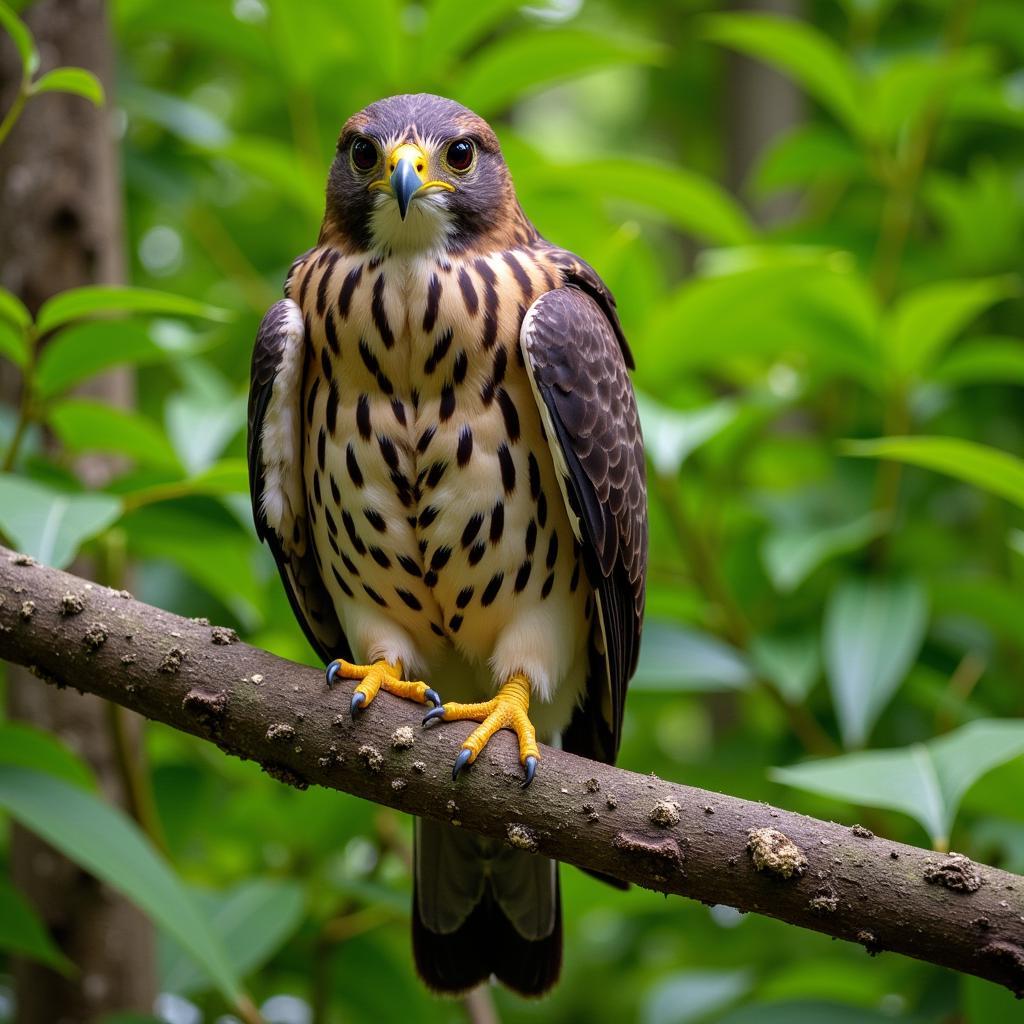Unveiling the African Cuckoo Hawk: A Bird of Prey
The African Cuckoo Hawk ( Aviceda cuculoides) is a fascinating bird of prey found across sub-Saharan Africa. This captivating raptor is known for its unique appearance, intriguing behavior, and crucial role in the African ecosystem. This article delves into the life of the African cuckoo hawk, exploring its habitat, diet, breeding habits, and the challenges it faces.
Habitat and Distribution of the African Cuckoo Hawk
The African cuckoo hawk is widely distributed across sub-Saharan Africa, inhabiting a diverse range of environments from dense forests and woodlands to savannas and even suburban areas. Its adaptability allows it to thrive in various habitats, including coastal regions, riverine forests, and mountainous terrain. They prefer areas with a good supply of prey and suitable nesting sites. This hawk is generally a resident bird, meaning it doesn’t undertake long migrations.
They are known to be opportunistic hunters, adapting their diet to the available prey in their specific habitat. This adaptability is key to their survival. Their calls, often described as a series of whistles and shrieks, add to the symphony of the African wilderness. Their striking appearance, marked by their cuckoo-like plumage and hawk-like build, further distinguishes them in the avian world.
 African Cuckoo Hawk Perched on a Branch
African Cuckoo Hawk Perched on a Branch
Diet and Hunting Techniques of the Aviceda cuculoides
The African cuckoo hawk is a skilled predator, primarily feeding on insects, especially caterpillars and grasshoppers. It also consumes small reptiles, amphibians, and occasionally birds. The cuckoo hawk’s hunting technique involves patiently perching on a high vantage point, scanning the surroundings for potential prey. Once spotted, it swiftly swoops down, capturing its quarry with its sharp talons. This hawk is known for its agility and precision in flight, making it a formidable hunter. It often hunts in the canopy, using the cover of leaves to ambush its unsuspecting prey.
The diet of the African cuckoo hawk plays a vital role in maintaining the balance of the insect populations within their ecosystem. They are important in controlling pests which can damage crops or spread diseases. Understanding their dietary habits is crucial for conservation efforts. Their hunting methods contribute to the overall health and stability of the African ecosystem.
Breeding and Nesting Habits
The breeding season of the African cuckoo hawk typically coincides with the rainy season, when food is abundant. They build their nests high up in trees, using twigs and leaves. The female typically lays two to three eggs, which are incubated for around 30 days. Both parents share the responsibility of feeding and caring for the chicks. The young hawks remain in the nest for several weeks before fledging.
The African cuckoo hawk’s nesting habits demonstrate their resourcefulness and adaptation to their environment. Their choice of nesting sites offers protection from predators and provides a secure environment for their young. The shared parental care also contributes to the survival rate of their offspring.
Conservation Status and Threats
The African cuckoo hawk is currently listed as a species of Least Concern by the IUCN. However, like many other bird species, they face various threats, including habitat loss due to deforestation and agricultural expansion. Pesticide use can also indirectly impact their populations by reducing their prey base. Furthermore, climate change poses a growing threat to their long-term survival. Conservation efforts are crucial to ensure the continued prosperity of this unique bird of prey.
Conclusion: The Future of the African Cuckoo Hawk
The African cuckoo hawk, with its intriguing habits and vital role in the ecosystem, remains a fascinating subject of study. Understanding its behavior, diet, and breeding patterns is crucial for effective conservation efforts. By protecting its habitat and mitigating the threats it faces, we can ensure the continued survival of the Aviceda cuculoides for generations to come. We encourage further research and observation of this remarkable bird of prey to deepen our understanding and strengthen our commitment to its preservation.
FAQ
- What does the African cuckoo hawk eat? Primarily insects, small reptiles, amphibians, and occasionally birds.
- Where is the African cuckoo hawk found? Across sub-Saharan Africa.
- Is the African cuckoo hawk endangered? No, it’s currently listed as a species of Least Concern.
- What are the main threats to the African cuckoo hawk? Habitat loss, pesticide use, and climate change.
- What is the African cuckoo hawk’s scientific name? Aviceda cuculoides.
- When does the African cuckoo hawk breed? Typically during the rainy season.
- Where do African cuckoo hawks build their nests? High up in trees.
Other questions that may arise include the specific calls of the African cuckoo hawk, its lifespan, and the role it plays in different ecosystems across Africa. You might also be interested in learning more about african birds in india.
For further reading, you can explore other articles on our website related to African birds of prey, conservation efforts in Africa, and the impact of climate change on wildlife.
If you need any assistance, please contact us at +255768904061, email us at kaka.mag@gmail.com or visit us at Mbarali DC Mawindi, Kangaga, Tanzania. We have a 24/7 customer support team available.



